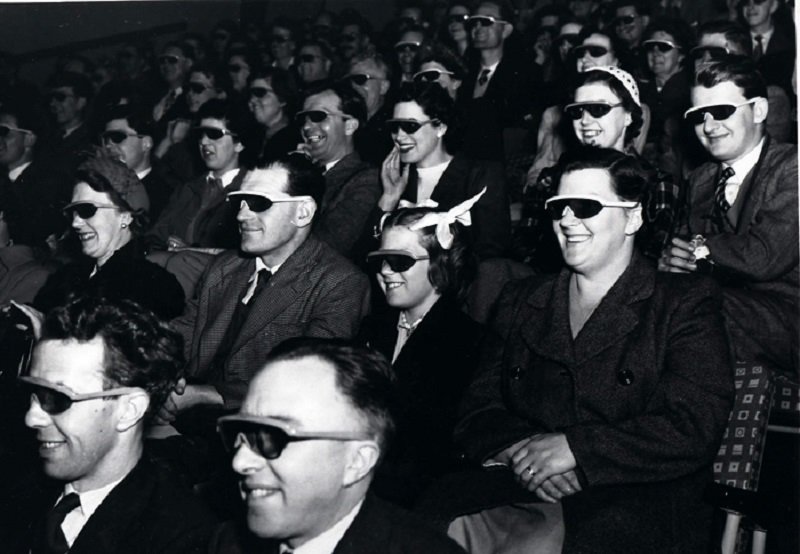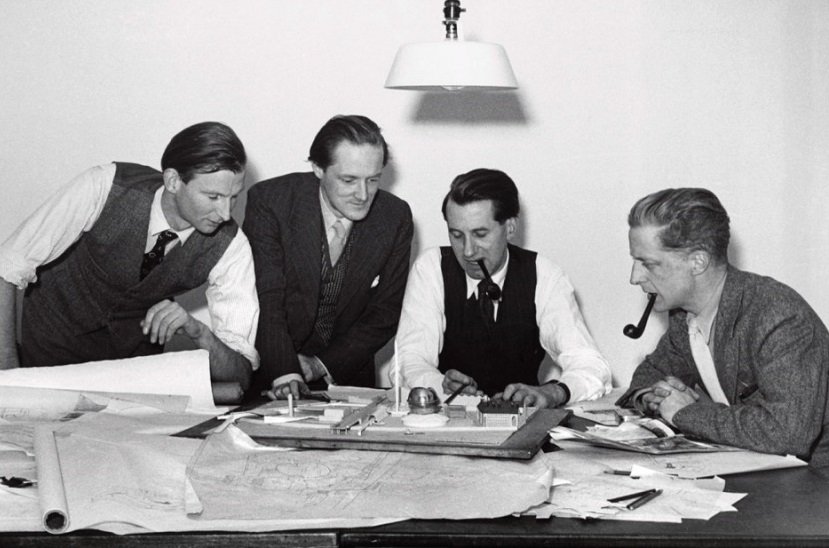The Festival of Britain – tonic for the nation
This summer is the 70th anniversary of one of Britain’s most ambitious cultural events, the Festival of Britain. It attracted millions but was criticised for costing too much, though its legacy includes the South Bank, which attracted millions of tourists to its arts and shops complex before lockdown. TOBY PORTER outlines its story.
The Festival of Britain was a nationwide exhibition celebrating Britain’s excellence in design, technology, industry, architecture, science and the arts. Its cultural heart was a purpose-built spectacular showcase on the South Bank.
It was open from from May 3 to September 30, 1951 as a tonic for a bombed-out run-down Britain, six years on from the end of the Second World War and amid the scaling down of rationing.
A CREATIVE SPRINGBOARD
The landmark event was staged to coincide with the 100th anniversary year of the Great Exhibition, held in 1851 in the Crystal Palace in Hyde Park.
A Labour government had won a landslide victory in the post-war General Election of 1945. Herbert Morrison – Prime Minister Clement Attlee’s deputy and the former leader of the London County Council (LCC) – was in charge.
The Director General was Gerald Barry, the former editor of the left-leaning News Chronicle newspaper, a champion of the arts with a strong interest in architecture.
Barry coined the phrase “A tonic for the nation” – which he said had lost the ability to enjoy itself.

PAVILIONS, A DOME, A BRIDGE AND A CINEMA
Its pavilions were designed to create a narrative autobiography of Britain and a look to the future.
The Homes and Gardens Pavilion, for example, offered six solutions to space problems in the home. The New Schools Pavilion looked at equipment in the modern classroom, with a full-size mock-up. There were farm animals in the Country Pavilion – more than 5,000 prize animals were exhibited over the five months, from bulls to goats to ducks.
Other Pavilions included The Land of Britain, Minerals of the Island, Power and Production, Sea and Ships, Health, the Seaside and Television.
Mr Barry appointed architect Hugh Casson, a 38 year old rising star and future President of the Royal Academy (1976-1984), as architecture director – different architectural practices were invited to produce the 22 pavilions.
The variety of young architects – most had qualified before the Second World War so it was their first chance to design anything – resulted in a quirky, colourful mix of styles.
Most were built at great speed from asbestos sheets on a lightweight steel framework.
The Royal Engineers built a temporary pedestrian Bailey Bridge across the River Thames to link the north bank of the River Thames at Northumberland Avenue with the festival site.

The Dome of Discovery housed displays focusing on Britain’s pre-eminence in exploration in the North and South Poles and the Commonwealth, scientific discovery, weather forecasting, biological research, astronomy and outer space.
The dome was a revolutionary feat of engineering at the time – the biggest in the world – 365 foot in diameter and nearly 100 foot high; the largest building ever made of aluminium.
The futuristic Skylon, pointing upwards, had no practical function.
The 400-seat Telecinema was a state-of-the-art cinema, the first in the world to be built for showing both films and television.
It had nearly half a million visitors – people in Britain were avid film-goers, but few owned a television. The venue eventually became the National Film Theatre (NFT), renamed the British Film Institute (BFI) in 2007.
Documentaries every hour celebrated British life. The public could also watch the projection box working through glass screens.
There were more than 30 sculptures around the site, including ones by celebrated heavyweights Henry Moore, Barbara Hepworth and Jacob Epstein.
Some became big names as a result: Eduardo Paolozzi, Peter Laszlo Peri, Victor Pasmore, Feliks Topolski, John Piper and Lynn Chadwick.

LEGACY
The Royal Festival Hall was always designed to be permanent, built on the site of the old riverside Lion Brewery.
Once the festival ended, the works were dispersed around the country. ‘The Sunbathers’ by Peter Laszlo Peri, on the wall at the festival’s Station Gate, had welcomed visitors arriving from Waterloo railway station.
It was discovered, dilapidated and broken, in a hotel garden in London’s Blackheath. Restored by public crowd-funding in 2017, it is now on display at the station.
Lucienne Day was one of the most influential designers to fit out the buildings. Her radical fabric and wallpaper designs, showcased in the Homes and Gardens Pavilion, were a huge break from the traditional floral prints which covered homes at the time.
The Festival Pleasure Gardens were also created in Battersea Park, harking back to the former 18th century Pleasure Gardens in nearby Vauxhall.
They featured a funfair, beer gardens and a tree walk, theatres showing music hall and ballet, cafes and shops selling pens, jewellery and make-up, toys, electric razors and cameras – a break for a public still weighed down by austerity.

A 25 foot high elaborate Guinness Clock played Three Blind Mice four times an hour, accompanied by robots of spinning acrobats, a town crier and the Mad Hatter.
Winston Churchill’s government, elected a month after the end of the festival, ordered the demolition of the site, except for the Royal Festival Hall. Some Tories regarded it as Labour propaganda for a Socialist society. It has only become a cultural hub on a similar scale in the last 20 years, since the creation of the London Eye and Shakespeare’s Globe.
SOUTH LONDON SITES GET NEW LISTING ON ANNIVERSARY
Historic England has enhanced the protection offered to three South London landmarks on the 70th anniversary of the Festival of Britain.
The Royal Festival Hall, designed by the London County Council Architect Department as part of their contribution to the Festival of Britain.
The building was completed on May 3 1951, just in time for the festival opening, with further additions made during the 1960s.
The style of the building is best described as ‘in the spirit of the Festival of Britain’, as highlighted by its concrete, curved profile.
It was the first post-war building to become listed at Grade I (in 1987) and is one of Britain’s premier concert halls.
Its ‘egg in a box’ plan was considered a novel and remarkable idea at the time as the multiple foyers not only provided space for audiences to gather, but also helped to shield the concert hall from outside noise.
The interior has hardly been changed since 1951 and the original panelling, stone finishes, internal fittings and fabrics – like the wooden and bronze handrails in the main foyer and cantilevered red boxes along the auditorium walls – survive, as well as some hangings and sculptures.

The Church of St John, just off Waterloo roundabout in London, was originally built in 1822.
The church was commissioned by the Government following the Napoleonic Wars as part of a programme to provide extra churches to the expanding population.
During the Second World War, the church was struck by a bomb and remained damaged until 1950 when Thomas Ford was contracted to remodel the interior in a neo-Georgian style for the Festival of Britain.
The design features brick with sandstone dressings, a Portland stone spire and columns and a double decker pulpit.
The building was listed at Grade II* in October 1951 following the Festival.
Thc church’s role during the festival was to provide normal services, as well as to host concerts and choirs from across the country who performed at the festival.
The Citizens of Battersea War Memorial, Battersea was built as a dedication to the people of Battersea who lost their lives during the war and is one of the borough’s contributions to the Festival of Britain.
The memorial is designed as a place to rest and reflect. The memorial was listed at Grade II* in 2015.
Duncan Wilson, chief executive of Historic England said: “The Festival of Britain was such an important event in our national calendar, welcoming over eight million people to London during the summer of 1951.
“It raised the spirits of the British people following the austerity of the war and showcased Britain’s innovation to the rest of the world.
“The festival had a major influence on design and architecture and its legacy can still be seen today in our buildings and public artworks.
“We are delighted to be able to celebrate the Festival as it reaches its 70th anniversary and we hope that people will continue to appreciate its legacy for years to come.”
Main Image: General view of the Transport Pavilion at the Festival of Britain
